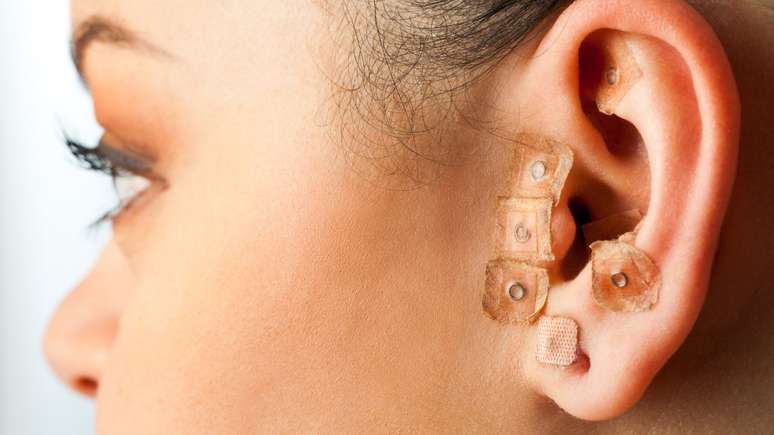Auriculotherapy uses points in the ears to reveal and treat various diseases; understand how and in which cases it can be recommended
You know auriculotherapy? It is a type of therapy that, like acupuncture, aims to rebalance the body’s functions activation of certain points. The difference is that in the case of auriculotherapy these points are located specifically on the patient’s ear.
In Traditional Chinese Medicine (TCM), the ears are considered a sort of map of the organism, in which each anatomical region represents a part of the human body. This is the idea behind auriculotherapy, the use of each part of the ear to treat or uncover problems throughout the body.
Diseases treatable with auriculotherapy
The technique, combined with acupuncture, optimizes the treatment of chronic pain, such as fibromyalgia, migraines, arthritis and osteoarthritis. It also helps to lose weight, overcome addictions, control allergies, treat kidney, liver, heart, respiratory and digestive disorders.
The combination of therapies is also indicated to treat emotional illnesses, such as depression, insomnia, anxiety, panic syndrome, among others. And on the aesthetic side, it helps lymphatic drainage, counteracting sagging skin, minimizing wrinkles and preventing premature aging.
In all cases, the necessary points on the ear are activated by applying needles, seeds or attaching small silicone balls, also known as Stipers.
The ears reveal a lot!
According to auriculotherapy techniques, the ears can not only contribute to the treatment of diseases of the rest of the body, but also say a lot about the body.
The lobe, that little bump at the bottom of the ear, is the most important thing in this regard. The size of this anatomical region, according to acupuncturist and auriculotherapy specialist Roselaine Oliveira, reveals the genetic constitution inherited from the parents (the larger the lobe, the better the genetic heritage).
The specialist also explains that each area of the sulci, which cut the lobe, carries different information. “Changes in the coronary sulcus indicate cardiovascular disease. Signs in the tinnitus sulcus indicate ear dysfunction and other hearing changes, such as tinnitus. Additionally, signs in the psychic sulcus are signs of memory problems, such as difficulty concentrating and even Alzheimer’s,” Roselaine quotes.
The appearance of the lobe, in turn, reveals the quality of the renal IQ, linked to vitality, in auriculotherapy. “As we age, the lobe becomes more and more flaccid. However, in many cases it is possible to observe this process early,” explains the specialist.
Source: Terra
Ben Stock is a lifestyle journalist and author at Gossipify. He writes about topics such as health, wellness, travel, food and home decor. He provides practical advice and inspiration to improve well-being, keeps readers up to date with latest lifestyle news and trends, known for his engaging writing style, in-depth analysis and unique perspectives.









